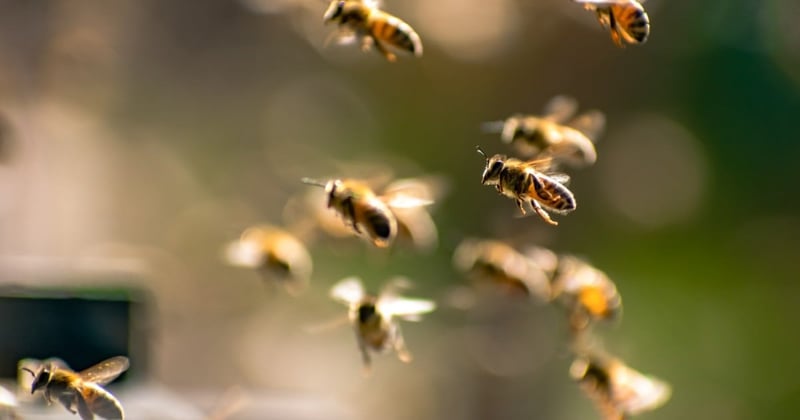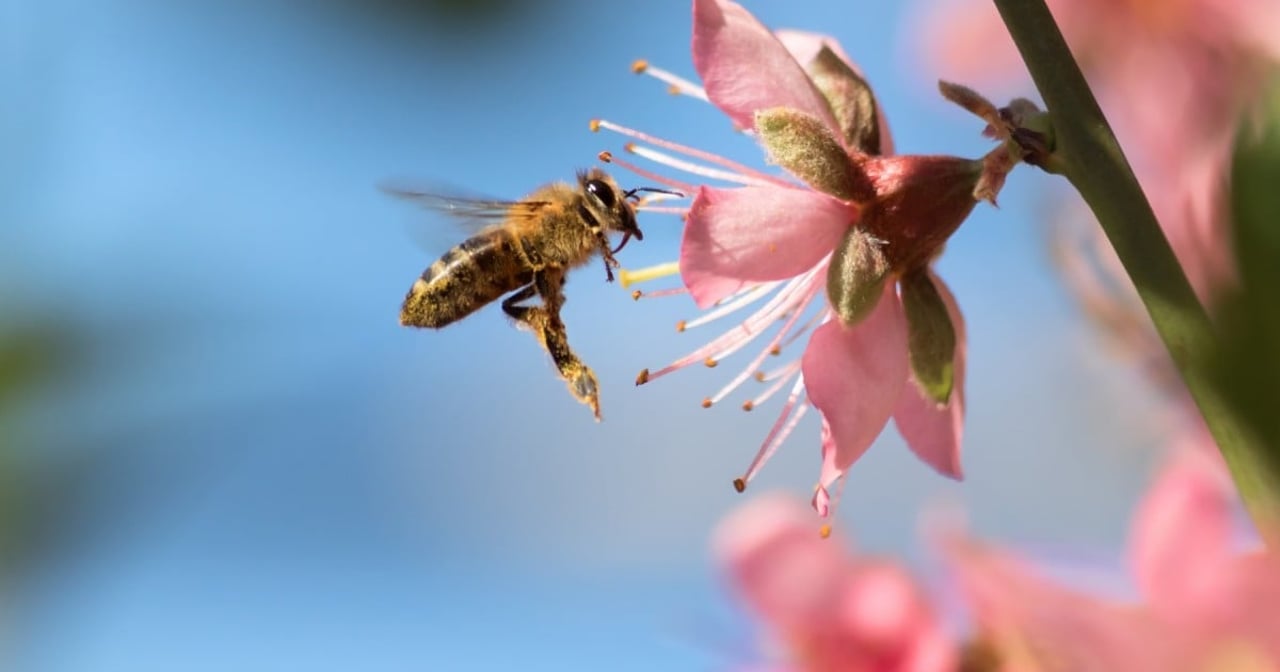
The honeybee is in danger and that puts us in danger, too.
Pollinators like honeybees, butterflies, and beetles play an essential role in our food supply and ecosystem. Bees pollinate more than three-quarters of the fruits, nuts, and vegetables grown in the US, including foods like tomatoes and almonds. Pollinators, usually honeybees, are responsible for one in every three bites of food we eat. But neonicotinoids (also called neonics), a class of insecticides that are highly toxic to bees, are decimating bee populations. On August 19, World Honeybee Day, learn about honeybees and how you can help protect these animals—and ourselves.
Bees Under Siege
For decades, bee populations in the US have been declining, and the situation is getting worse. Roughly one-third of honeybee colonies were lost between 2016-2018. Neonics are a major contributor to their decline. Neonics impair bees’ central nervous systems, causing changes in pollination and reproductive behavior, paralysis, and even death. Bees aren’t the only ones being harmed. Neonics are leaching into our soil and waterways, killing aquatic life, hurting large mammals, and a major factor in declining bird biodiversity. They threaten entire ecosystems.
Despite overwhelming scientific evidence that neonics are dangerous, they are the most commonly used insecticide on the planet. While neonics are sprayed on some fruit and vegetable groups they are primarily used as seed treatments that coat most corn and soy seeds in the US. This use is predominantly for mass producing the billions of pounds of corn and soy going to the billions of farmed animals raised on factory farms in the US each year. To protect bee populations, multiple governments have banned or restricted the use of certain neonics including the European Union, Oregon, and Maryland.
Thanks to relentless lobbying by pesticide conglomerates, the US government has failed to take any meaningful action to protect bees, the environment, and even human health from neonics.
However, some legislators are fighting back. In July, Representative Earl Blumenauer (D-Oregon) introduced the Saving America’s Pollinators Act, co-sponsored by Representative Jim McGovern (D-Massachusetts). The bill creates a pollinator protection board to monitor native pollinator populations and bans the use of neonics and other harmful pesticides until the board determines their use is safe.
Bees Are Important in Their Own Right
Bees aren’t only worth protecting because of their value to humans. While their bodies and evolutionary history are quite different from our own, we know that bees and other insects display behaviors similar to mammals. For example, a 2017 experiment demonstrated that bumblebees can learn to manipulate a ball to receive a reward. In another study, scientists demonstrated that bees understand the concept of zero. For a long time, we thought only humans used tools. We recognize now that other species, including primates, birds, and, yes, insects do as well. Our understanding of bees’ (and all insects’) inner lives is still very limited, unfortunately, but it’s almost certain that scientists will uncover more of their complexities in the future.
How to Help
Share your support for the Saving America’s Pollinators Act by tweeting this blog and using the hashtag #SaveOurPollinators. Be sure to tag and thank Representative Blumenauer (@repblumenauer) and Representative McGovern (@RepMcGovern) for introducing the bill.
In the meantime, creating a wildlife-friendly yard will help bees and other animals thrive. There are lots of online resources with ideas and tips on how to make your outdoor areas eco-friendly, but key elements include ditching grass lawns, swapping out invasive plants for native ones, and never using pesticides (or spraying your yard for mosquitoes).
When we think of wild animals, we rarely think of bees first. But our food system depends on bees, and bees deserve to live in a healthy environment where they can flourish.
